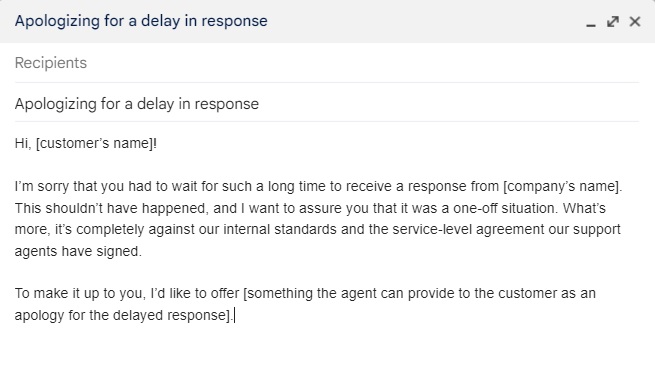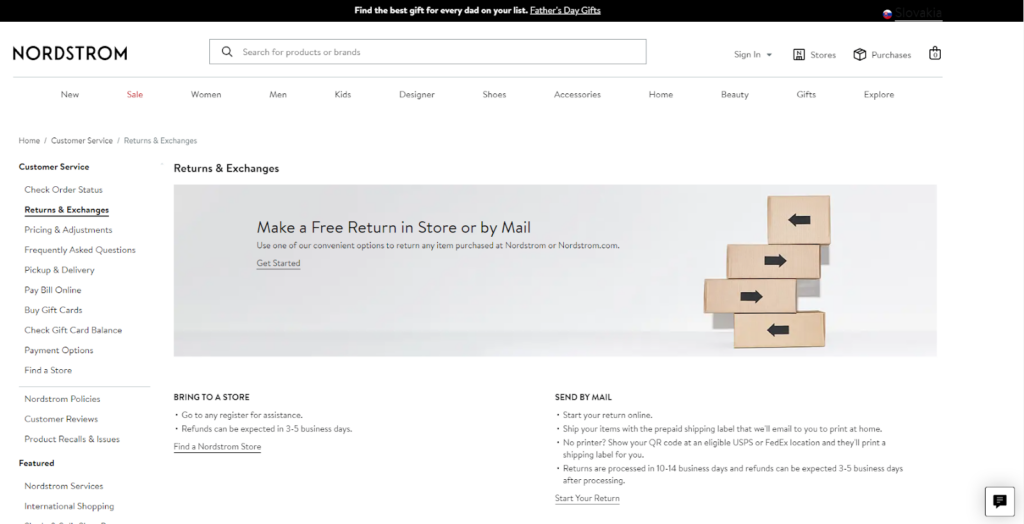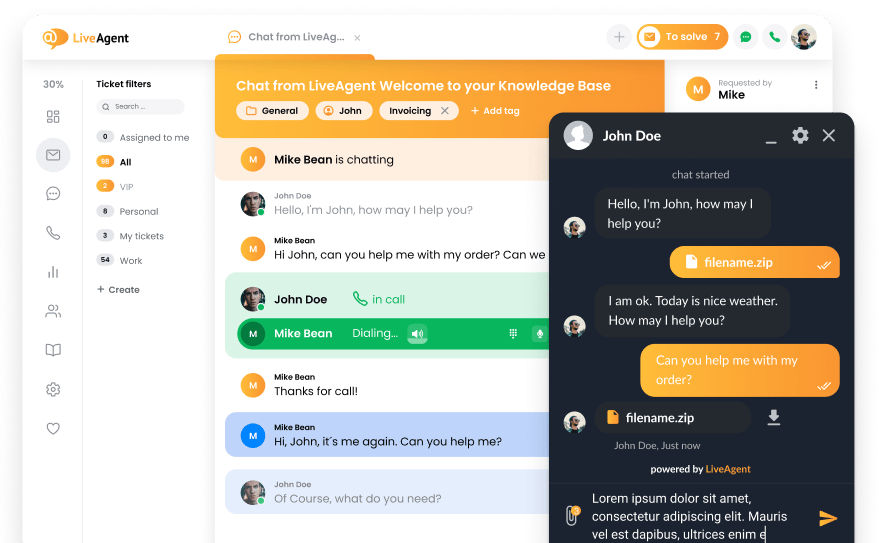Dealing with an angry customer can be one of the most challenging aspects of any customer service role. However, mastering the art of de-escalation is crucial for maintaining customer satisfaction, fostering positive interactions, and preserving customer loyalty.
In this comprehensive guide, we will look at the most effective strategies and techniques for calming upset customers, addressing their concerns, and turning a potentially negative experience into a constructive one. Whether you’re a seasoned professional or new to the field, these practical tips will equip you with the skills needed to handle difficult situations with confidence and empathy.
Key takeaways
- The de-escalation process is a strategy aimed at easing a customer’s negative emotions to prevent the escalation of conflict and help resolve complaints promptly.
- There are different stages of de-escalation, as well as many techniques and strategies to ensure the agent can handle even more tense situations.
- Customers tend to escalate mainly because of a lack of communication, outages, unresolved issues, or misunderstandings/changes in payment terms.
- To de-escalate tense situations successfully, it’s important to apologize, listen carefully, show empathy, not take the customer’s anger personally, try to find the best possible solution, and follow up with the customer later.
- The choice of strategy depends on the environment. When communicating with a customer on the phone, it’s important to pay attention to the tone of voice and quick reactions.
3 stages of de-escalation
Using a medical approach, there are three stages of de-escalation: dialysis, mental skin graft, and raising oxytocin while lowering cortisol levels.
- Dialysis refers to the stage of a crisis situation where the customer begins to vent their frustration as they speak with you. At this stage, allow them to talk without interrupting. During this stage, actively listen to them and validate their feelings.
- The mental skin graft is the point where you have succeeded in subtly disarming the customer. At this point, you can interfere in their thinking to calm their minds by reassuring them some more.
- The final stage, which compares oxytocin and cortisol levels in the customer, is when the customer begins to feel heard and connected to the customer service agent. At this point, the customer should be calm.
Common reasons why customer escalates
Reasons may depend on the types of customers, but the most common ones are:
- Lack of communication: Poor customer communication or miscommunication can leave customers feeling ignored or misunderstood.
“When customers perceive that they are not being heard or that their concerns are not being taken seriously, they are more likely to escalate. This is closely related to the agent’s word choice and overall approach.”
Andrej Saxon, LiveAgent’s sales manager
- Outages: Whether in utilities, internet services, or other essential services, outages are a major reason for customer escalation due to the immediate or severe disruption they cause, often following significant inconvenience, financial losses, or operational disruptions.
- Customers consider their issues as the highest priority: Naturally, the top priority for each client is their own issue; however, the customer support team has to take care of a huge number of inquiries. Sometimes, customers may perceive a lack of urgency as a lack of respect or importance given to their problem.
- Customers doubt the agent/are unsatisfied with the response: Most often, customers may feel misunderstood or believe their issue is not being taken seriously. This lack of trust and confidence can lead to increased frustration and an insistence on speaking to a higher authority.
- Payment terms: Unexpected charges, billing errors, or difficulties in the payment process can also trigger customers to escalate and lose trust towards the company.
- Unresolved issues: Customers often escalate when their problems are not addressed promptly or adequately. If initial attempts to resolve an issue fail, frustration builds, consequently leading to escalation.
10 de-escalation techniques for customer service
De-escalation techniques in customer care are valuable tools for resolving conflict and defusing tense situations. By using these strategies, customer service can effectively navigate intense communication, ensure quality outcomes and maintain customer satisfaction.
In this part, we will discuss 10 useful de-escalation techniques customer service agents should master in order to be able to handle even more difficult situations.
1. Don’t put them on hold
This technique emphasizes the importance of maintaining continuous engagement during customer interactions. Instead of placing them on hold, address their concerns directly and provide assistance in real-time.
Obviously, the waiting doesn’t suit anybody, and if it’s intensified by anger, stress or nervousness, it can only harm the overall customer experience. The statistics show that 60% of customers that are placed on hold hang up, which definitely is not a good foundation for de-escalation.
2. Apologize
Apologizing is mainly about acknowledging mistakes, misunderstandings, or inconveniences the customer has experienced. By offering a sincere apology, you validate the customer’s feelings and demonstrate empathy, which can help diffuse their frustration or anger.
Imagine a customer contacting a company’s support line after receiving a damaged product. Instead of becoming defensive, you, as the customer service representative, empathetically apologize for the inconvenience caused by the damaged item. You express genuine regret for the situation and assure the customer that steps will be taken to rectify it promptly.
This can often shift the customer’s demeanor from one of frustration to one of understanding and cooperation. If you’re not sure how to apologize in the most appropriate way, use our apology templates to help you out.

3. Listen actively
Above anything else, active listening is about fully concentrating, understanding, responding, and remembering what the customer is saying. This technique demonstrates to the customer that their concerns are being heard and taken seriously, which can help decrease tension and build rapport.
For example, suppose a customer contacts the company’s helpline to express frustration over a billing error. Instead of immediately jumping into problem-solving mode, you practice active listening by offering the customer’s full perspective, acknowledging their concerns, and summarizing the issue to ensure that you have understood it.
By actively engaging with the customer’s concerns in this way, you not only build on their feelings but also lays the foundation for a productive and collaborative dialogue toward a solution.
4. Show empathy
Or in other words, show genuine concern, express your involvement. Let the customer know that you understand and validate their feelings and perspective.
For instance, if a customer is upset due to a delayed delivery, you can express empathy by saying, “I understand how frustrating it can be to wait for a package, especially when it’s delayed. I’m truly sorry for the inconvenience this has caused you.” By acknowledging the customer’s emotions and demonstrating understanding, you can help alleviate their frustration and foster a more positive interaction.
5. Remain calm
Even though this may be easier said than done, this strategy is really important in the context of de-escalation. It enables you to uphold professionalism, build trust, facilitate communication, and set a positive example for your peers, ultimately contributing to a positive customer experience and bolstering your company’s reputation.
You can’t control the behavior of your customers, but you are responsible for the answer to this behavior, which eventually determines whether the situation will escalate or de-escalate.

6. Do not take it personally
This strategy is strongly connected with the previous one. To preserve professionalism, you need to maintain emotional detachment from the situation. Consequently, you’ll be able to avoid becoming defensive or escalating the situation further, leading to a more positive resolution for both parties. Take a deep breath, concentrate, and try to focus on the key points of the customer complaint.
It’s important to remember that the customer’s anger is NOT aimed at you personally, despite the fact that you stand in the front line. Another useful strategy at this point is to try to take a look at the perspective of the customer and understand his point of view. This may help you not take the customer’s vivid reactions personally.
7. Simplify complex problems
When it comes to tense, escalated situations, most of the time we’re talking about more complicated, complex issues. Simplifying problems can be beneficial, since it allows for a more focused, step-by-step resolution. This approach helps to identify key issues, prioritize actions, and create a clear plan to de-escalate the situation.
Imagine a customer contacts you as a tech support team because their computer is experiencing multiple issues: it’s running slowly, frequently crashes, and has trouble connecting to the internet. You break down the problem into smaller parts by asking clarifying questions to identify specific issues, to prioritize these issues based on severity and commonality, starting with the most disruptive problem.
Thanks to this, you can provide step-by-step instructions and set clear expectations about the next steps and timelines for resolving each issue.
8. Identify the cause
This strategy involves thoroughly understanding the root cause of a customer’s issue before attempting to provide a solution. This approach helps address the actual problem rather than just the symptoms, leading to more effective and lasting resolutions. By identifying the cause, you can demonstrate competence and build trust with the customer, which helps to calm the situation and prevent further escalation.
If we take the situation from the previous point as an example, we can see that thanks to the clarifying questions, the customer service rep was able to identify the cause and eventually provide the customer with a solution.
9. Offer solution
This is basically the reason why customers reach out to the customer service – they seek for a solution, even in these challenging situations. Offering potential solutions demonstrates competence and a willingness to help, which can reduce frustration, build trust, and in the end of the day, de-escalate the tense situation.
However, it isn’t always easy to come up with a specific solution. When you encounter situations when it’s not possible anymore to provide a suitable solution, you can always offer the customer a form of compensation. You’ll show your commitment to resolving the issue, which helps de-escalate the situation effectively.
10. Check for additional concerns
Finally, asking the customer if there are any other issues or questions can help de-escalate a tense situation. This strategy helps ensure the customer feels fully supported and prevents further frustration by addressing any lingering problems. It demonstrates thoroughness and care, which can, among other things, build trust, satisfaction, and prevent bad reviews.
De-escalating an angry customer over the phone
Now that we’re aware of the de-escalation techniques, let’s learn how to de-escalate an angry customer on the phone. Imagine a situation when a customer calls your customer service call center, furious because they received a defective product. They have already tried to resolve the issue through email and chat but were not satisfied with the responses.
What should you do?
First of all, it’s important to ensure the customer that you are listening to him actively and that you understand their concerns. You can use phrases like “I understand that this situation made you upset” or “I see how frustrating this must be”. You are, among other things, building rapport with the customer. In the context of de-escalation techniques for customer service call center agents, paying attention to your tone and voice, in order to build trust with the customer.
You also need to make customers see that you are ready to find the best solution for their issue; in other words, shift the conversation towards finding a solution and taking ownership of the problem. The useful phrases may be: “Here’s what we can do right now: …” or “Let’s work together to get this sorted out as quickly as possible.”
LiveAgent can be especially helpful in such situations, as you can write notes for each customer, whether they’re related to past issues or specific information about that customer. This also allows you to de-escalate dissatisfied customers easily in a professional way.
De-escalating an angry customer through live chat
You may encounter an irate customer on live chat. What do we do then? Let’s think of a situation when a customer is frustrated because they were overcharged for a product and are unable to get a refund through the automated system.
Since this type of communication isn’t influenced by verbal communication, it’s crucial to focus on the response time, structure and content of the message. So in our case, you may use these phrases: “I’m really sorry to hear about the overcharge and the trouble with our system” or “Thank you for bringing this to our attention” and also “I will personally follow up with you tomorrow to ensure the refund has been successfully processed.”.
These phrases enable you to apologize, to show empathy, and to express your interest in resolving the issue ASAP. Utilizing software such as LiveAgent you can be even more effective in such situations, with features such as Canned Messages, which can reduce response times.
De-escalating an angry customer in-person
Now let’s see how to de-escalate a situation with a customer in person. Here, non-verbal communication is crucial. Imagine a customer is furious because they bought an expensive electronic item from your store that stopped working after a week, and they feel the return policy is too restrictive.
Together with apologizing, showing empathy and understanding, pay attention to positive body language, like maintaining eye contact or nodding. Don’t forget to not take it personally and focus on providing suitable assistance and restoring customer’s confidence in your service.
Customer service agents de-escalation training
Customer service team de-escalation training involves a combination of understanding the importance of developing core skills, continuous practice, and providing a supportive environment for improvement. This may include role-play exercises, empathy training, body language workshops, voice modulation exercises, or stress relief workshops.
Focus on regular feedback, reviews, and refresher courses. Also, it’s useful to establish clear guidelines and templates for common situations. Feel free to inspire yourself with our template section with ready-to-use templates to calm down angry customers.
De-escalation in real-life situations: Quick examples
This section is dedicated to real-life situations from business, and we will take a closer look at how different companies handle angry, unhappy customers.
Amazon

Amazon uses proactive, effective communication to keep customers informed about their orders, shipping delays, or any potential issues. This reduces the likelihood of frustration and anger. When problems arise, Amazon focuses on quick and efficient resolution. Their customer service representatives are trained to listen carefully, acknowledge the problem, and offer immediate solutions such as refunds, replacements, or discounts.
Their customer-centric policies, such as hassle-free returns and 24/7 customer service, help de-escalate situations by providing easy and convenient ways for customers to resolve their issues.
Apple

Apple’s in-store Genius Bar provides a personalized and hands-on approach to de-escalate a situation caused by technical issues. When customers are frustrated with their devices, they can get face-to-face support from knowledgeable staff who can empathize and provide immediate solutions.
Furthermore, Apple often offers multiple solutions, such as device repairs, replacements, or software troubleshooting, and lets the customer choose the option that best meets their needs.
Nordstrom

Nordstrom is famous for its no-questions-asked return policy. This policy empowers employees to accept returns and exchanges without hassle, which can quickly resolve customer dissatisfaction.
Additionally, this company trusts its employees to use their judgment in handling customer issues. This autonomy allows employees to take immediate and appropriate action to satisfy the customer, such as offering refunds, exchanges, or other accommodations.
Conclusion
By now, you should be equipped to manage customer de-escalation. In this article, we covered de-escalation itself and the main reasons why customers escalate. We saw many useful de-escalation techniques, such as staying calm, not taking things personally, and offering immediate solutions. Real-life examples from companies like Amazon, Apple, and Nordstrom highlight the importance of proactive communication, personalized support, and flexible policies in resolving customer issues swiftly and satisfactorily.
At the end of the day, we’re all human beings, which means we have emotions. By mastering de-escalation techniques and strategies, you can become much more efficient in providing excellent customer service, whether in a calm or more tense atmosphere. To do so, take advantage of LiveAgent’s 30-day free trial.
Become a wizard at providing outstanding customer service
Master de-escalation techniques and take the next step in your customer service journey with LiveAgent.
Frequently Asked Questions
How can I de-escalate customers without an immediate solution?
Listen to their concerns actively, show empathy, and acknowledge their frustration. Assure them that their issue is being prioritized and provide a clear timeline for follow-up. Make them feel heard and valued despite the lack of an immediate resolution by keeping communication open and updating them regularly on progress.
How can I involve a supervisor without undermining the customer?
Explain to the customer that you want to ensure they receive the best possible assistance and that a supervisor can offer additional resources and expertise. Frame it as a collaborative effort to resolve their issue more effectively and quickly, emphasizing your commitment to their satisfaction.
What should I do if the customer becomes abusive or threatening?
If a customer becomes abusive or threatening, remain calm and professional. Politely set boundaries, stating that abusive language or threats are unacceptable. Offer to continue the conversation once they have calmed down or involve a supervisor. Prioritize your safety and follow company protocols for handling these situations.
What phrases should I avoid with an angry customer?
Avoid phrases like "Calm down," "It's not our policy," "There's nothing I can do," "You misunderstood," “That’s just how it is,” or “I’m busy right now”. These can appear dismissive or unhelpful. Instead, use empathetic and solution-focused language to acknowledge their frustration and work towards resolving the issue.
If you're looking to delve deeper into handling challenging situations, you might want to read about how to de-escalate an angry customer. This comprehensive guide offers practical techniques like apologizing and listening actively to help calm upset customers. Additionally, exploring the customer service agents de-escalation training can provide insights into real-life scenarios where these skills are crucial. Understanding these methods can significantly improve your ability to manage difficult interactions effectively.

 Български
Български  Čeština
Čeština  Dansk
Dansk  Deutsch
Deutsch  Eesti
Eesti  Español
Español  Français
Français  Ελληνικα
Ελληνικα  Hrvatski
Hrvatski  Italiano
Italiano  Latviešu
Latviešu  Lietuviškai
Lietuviškai  Magyar
Magyar  Nederlands
Nederlands  Norsk bokmål
Norsk bokmål  Polski
Polski  Română
Română  Русский
Русский  Slovenčina
Slovenčina  Slovenščina
Slovenščina  简体中文
简体中文  Tagalog
Tagalog  Tiếng Việt
Tiếng Việt  العربية
العربية  Português
Português 




